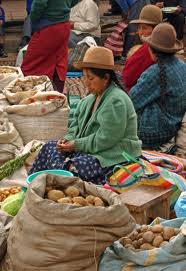Shortly after settlements began appearing on the east coast, it became apparent that making a living in America would take a lot of manpower. There were forests to be cleared and crops to be tended to. In 1619, "A Dutch ship brings the first permanent African settlers to Jamestown. These Africans soon are put to work on tobacco plantations." (PBS.org) However, the number of slaves in America remained relatively low until the 18th century when the slave population (mostly in the rice and tobacco growing south) exploded. This increase in slaves largely came about as a result of the slave trade across the Atlantic on what is now known as the Middle Passage. This trip was long, deadly, and miserable. The African slaves would be quartered below deck with few rations, and would lie side by side in cramped quarters. There was usually an area in the center of the deck for the purpose of holding human excrement, but many were too sick or cramped to move to this space when they needed to. This environment caused disease to flourish and resulted in many deaths. "On average, about 15 percent of the slaves died, but sometimes half or more perished." (Roark 137)
 |
| From Africans in America, pbs.org |
Unfortunately, this resistance coupled with the large amount of slaves in the southern colonies made the white colonists very paranoid about open rebellion. This caused harsh penalties to be allotted to slaves who would not fall neatly into line. Disobedient slaves were whipped, branded, castrated, executed, and maimed on a regular basis. Most times, the punishment was a result of a minor offense. Thus, the slaves were utterly trapped in this dehumanizing position of being someone's property, merely existing to make their owner more money. They were completely disposable if they became a liability.
Viewing African slaves as property, and treating them as such did not happen over night. It was the result of ever tightening laws that few opposed. For example, in 1640 a Virginia court ruled that an African run away servant serve his master for life. In 1662, a Virginia court ruled that any slave woman's child would be a slave to her master, because she herself is a slave at the time of delivery. In 1667, Virginia ruled that conversion to Christianity could not free a slave from their bondage. In 1669, Virginia ruled that if a slave should die while being punished, the owner is not guilty of any crime. These laws continued to get more and more strict as the fear of rebellion increased.
 |
| From Africans in America, pbs.org |
Sources:
"Africans in America: A Terrible Transformation" pbs.org. Part 1, PBS, Accessed Feb 15, 2013.
Opala, Joseph. "The Gulla: Rice, Slavery, and the Sierra Leone-American Connection" yale.edu. Yale University, Accessed Feb 15, 2013.
Roark, Johnson, Cohen, Stage, and Susan Hartmann. The American Promise. Boston: Bedford/St. Martin's, 2012. Print
"Slave Law in Colonial Virginia: A Timeline" studythepast.com. Sam Houston State University, accessed Feb 15, 2013




